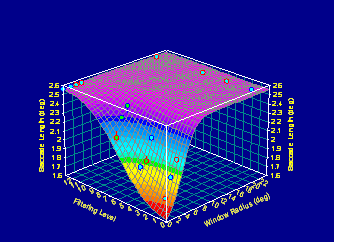Visual Resolution and Eye Movements

We constantly move our eyes while looking at scenes, making saccades (eye movements) about 3 times per second. Most vision researchers assume that we move our eyes in order to make up for our poor visual resolution in the visual periphery. But what level of resolution does the brain use to guide our eyes to new locations? An initial study (Loschky & McConkie, 2002) using a gaze-contingent multi-resolutional display found that there is a threshold level of image resolution below which the eyes are less likely to go to a certain image region. This saccade-targeting threshold varies as a function of both image resolution and distance from the center of vision; with increasing eccentricity (distance from the center of vision), image resolution decrements must be greater to affect saccade targeting. A follow-up study (Loschky, in preparation) found that the saccade-targeting threshold is lower than the image blur detection threshold. Thus, relatively low resolution information is useful for guiding the eyes in natural scenes, but there are limits beyond which low-resolution information loses its utility. We have argued that the brain uses a neural competition among potential saccade targets in which removing useful spatial frequencies reduces the saliency, or allure, of potential saccade targets, thus increasing the attractiveness of closer, less filtered objects with useful information.